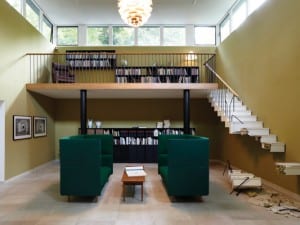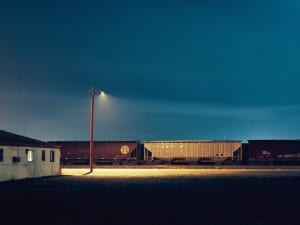Art, Justice and Terror is a day of discussion and debate curated by London College of Communication, University of the Arts London, in response to War of Terror, a solo show at Imperial War Museum London by Edmund Clark. The symposium brings together artists, lawyers, eyewitnesses, writers and academics to discuss how art may contribute to informing social attitudes on matters of justice in a time of global conflict, when the law has at times been absent.
A: What do you think is the role of the artist in a turbulent political landscape? Do you think that artists have a responsibility to document the world around us? Is this something that you find intrinsically weighs into your practice? Is this something that ultimately all artists do in some way?
EC: I am not sure that artists have a responsibility to document the world around them, artists can explore whatever it is that they feel is worth exploring if they have something interesting to say about it. There is crude metaphor which I sometimes use to talk about artists in relation to society and change, and that is a spectrum: at one end you have the artist as “entertainer” and on the other you have the artist as “investigator”, or “explorer”, who makes work that questions the conventional narratives of the world we live in – essentially putting a mirror up to society to look at itself. Artists can make art that is purely for a market, to be seen as entertainment or decoration, or they can make work that is about the societies in which we live. The most successful are in the middle of that spectrum, who make work that is both engaging and entertaining but also asks questions for all of us. I am personally naturally interested in exploring what’s going on around me – and that says as much about me as it does those events. It’s not strictly to document it as such, it’s to make work that hopefully engages other people in trying to reflect on the world and make them question the way that events in the world around them are represented – to question those conventional narratives that surround us.
The symposium at Imperial War Museum London on 17 June asks these kinds of questions, and looking at two main themes in response to my exhibition Edmund Clark: War of Terror. These are Art and Justice and Art and Terror. On the topic of art and justice we will be reflecting on the notion of justice and accountability, or the absence of those notions, in relation to the War on Terror, considering the events propagated both by terrorists and by our governments in response to those events. We will be asking: can art contribute to developing ideas of accountability and justice – can artists make work that stimulates debate around these issues? Do they have a role to do that? Is there a danger that if they do make work that is about justice and accountability around these themes that it becomes almost a replacement for those actual legal processes? In relation to terror we will be asking: What works are artists making about ideas of contemporary terror? Can artists make work about terror? How can art represent a domestic experience of terror as a consequence of distant war? How can it help us to understand legal procedures enacted upon individuals for reasons of international security, which can in themselves be acts of terror?
A: How is the conversation covering a range of topics and media? What other pieces of work or parts of research will be included as examples?
EC: The symposium is hosted by the London College of Communication, part of the University of the Arts London, and Imperial War Museum London. It has been jointly curated by me, and Max Houghton and Dr Christopher Stewart from LCC, who are also responsible for most of the organisation. It will include a range of experts and interested parties. Lawyers, like Cori Crider who worked at Reprieve on Guantanamo Bay and secret prison cases, and who was working with me when I was in Libya; Moazzam Begg, outreach director of CAGE and former Guantanamo detainee, who was implicated in those processes; researchers like Raffaello Pantucci, from a more conventional military think tank background; we have other artists like David Birkin and Diana Matar, who have made work about the “War on Terror” and their specific experiences of conflict in relation to terror; and we will have academics and thinkers: Professor Anthony Downey, Professor Fred Ritchin, and professor Eyal Weizman, who have all written about these subjects. (Eyal also makes investigative work about these subjects). So, we have a range of voices speaking. Max Houghton and Steven Mayes from the Tim Hetherington Trust will chair the sessions.
A: How do you think that contemporary art compares to traditional methods in terms of changing social attitudes?
EC: It’s all about the mechanisms, the machinery of making imagery. Each age has its prevailing means of communication, we used to live in a textual age where it was the word that was paramount but we now live in a visual age where we are surrounded by still and moving images – people spend their days making images in their personal lives on lens based machines, whether it be the phone, the camera, the film camera. Those are the tools that surround us and we see those images on screens, on our computers, our phones, our television screens, or our cinema screens. To make work that uses the machinery to produce those images, and on which those images are seen, is implicit in what I do. The work I make reflects the sources and the spectacles where the imagery of the “War on Terror” takes place. In relation to the past, and different techniques, you could say that painting and drawing were much more the preserve of the artist, not necessarily as an elite, but someone different – someone who could create forms that would distinguish them from the world they live in, rather than using the tools that are integral to everyone’s lives.
A: How does your exhibition, War of Terror relate to these wider discussions; what was the motive for the exhibition and how does this tie into the wider themes for debate?
EC: The day of events are in response to my exhibition War of Terror, which looks at three subjects, Guantanamo Bay and the prison camps there, the CIA secret prison programme, and the use of control orders, a form of detention without trial in the UK. It looks at how our governments have responded to the perceived threat of terror – the acts that that have been carried out in our name to protect us from terrorism, from outside and from within our societies – and reflecting on how, and if, those measures say something about whether ethical legal norms of western societies have changed over the past 20 years.
On another level it looks at how terror affects all of us – and how the measures that have been carried out involve the everyday and the domestic, whether they are to do with control orders, or secret prisons, or Guantanamo Bay. Themes which run through the whole of the exhibition are the everyday and the geopolitical, and how these huge global events can be seen through personal space and domestic space and personal experience. Whether that is equating the spaces that people are living once they are released from Guantanamo; or the homes of American personnel on naval bases; or looking at the spaces of detention; showing the mundanity of the places where the secret prison processes have been carried out, or the offices of the people that run them; these are the things that represent how we are all affected by terror.
A: How specifically has photography developed into a wider method of documentation, and how do you think that the lines have been blurred in terms of authority, responsibility and creative expression?
EC: Because we live in a visual age, the sense of the photograph and use of images has been liberated from the sense of the photographer as expert – and in some ways that has dispersed traditional notions of documentary and truth, which have always been questionable anyway if you stop and look at them, and has liberated practitioners to use imagery to explore issues in many different ways. My own work uses photographs that I have made, it also uses other people’s photographs, it uses bits of film, documents, and I use the image in a number of different ways and different scales. It is not the idea that the photograph is now a “document” of something, it is that the image and the combination of images, be they still or moving, be they documents or photographs, can be put together in ways that reflect everybody’s sophisticated relationship to images – and their understanding of the narratives that they form.
One of the aspects of my exhibition War Of Terror is the notion of spectacle and scale in the war on terror – a lot of my work is unspectacular, it’s about either domestic spaces, ordinary spaces, everyday spaces, or the documentation of control, and how that represents the interface between state control and the individuals that are being controlled. A work titled Orange Screen, developed in collaboration with Max Houghton, looks at iconic images of the war on terror and the events that they represent, but rather than showing the actual images from the TV screen or propaganda videos, the events, or the photographs which I have remembered, are described using words in textual form in the shape of a photographic image rectangle – decontextualizing the image, and the context of how the images were seen. I’m inviting people to try and remember the images, and to do this they have to try to remember the events themselves, through the images that they saw representing those events at that time.
A: What do you hope is the outcome of the event?
EC: All I can really expect, or hope for, is for people to be engaged and think about what the work is exploring, and the way in which I explore it. Hopefully it will reconfigure how they understand these subjects, which are complicated, so that they question the familiar narratives that they see on their screens, and about the people that are caught up in them. By bringing together lawyers, ex-detainees, academics, and artists, the sort of people that you don’t normally get together in one place, to talk about ideas of justice and terror and art – hopefully that unique combination of people and experiences and subjects will mean that people who come will have a fresh and different perspective on the defining events of the past twenty years.
Edmund Clark: War of Terror continues at Imperial War Museum London, London until 28 August. www.iwm.org
Art, Justice and Terror is at Imperial War Museum London on 17 June 2017, 11am – 5pm www.iwm.org.uk/events
Credits:
1. Swimming pool in the Hotel Gran Melia Victoria Palma de Mallorca. © Edmund Clark. Courtesy of Flowers Gallery London and New York.





